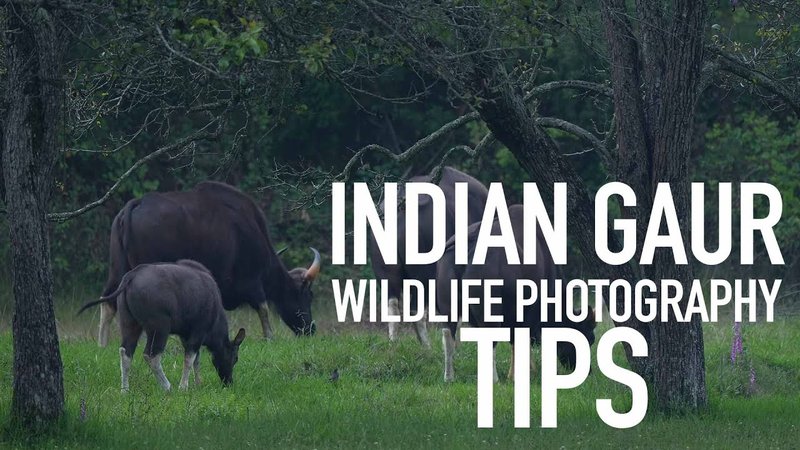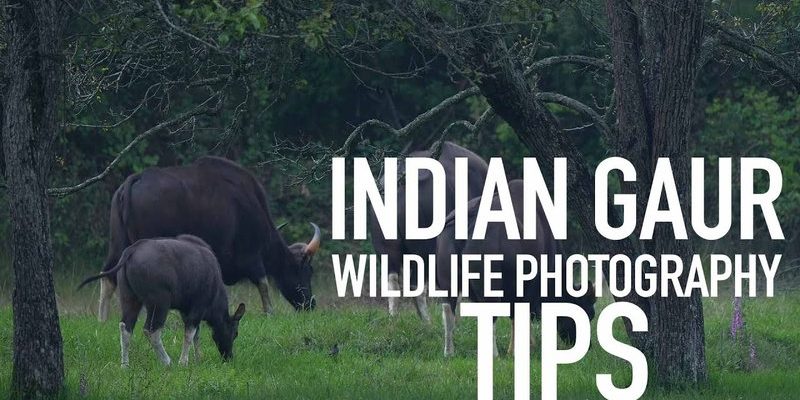
You might be wondering, “What makes the gaur so special?” Well, think of them as nature’s lawnmowers and gardeners. As both grazers and browsers, they munch on a variety of plants, influencing the growth patterns of vegetation in their territory. This not only helps maintain the health of the forests but also supports the countless other animals that rely on these spaces for food and shelter. Let’s dive deeper into how these fascinating creatures fit into the bigger picture of their environment.
1. Understanding the Gaur’s Habitat
The gaur is typically found in tropical forests, grasslands, and hilly terrains. They prefer areas with dense foliage, which offers shelter and food. These habitats range from the Terai grasslands in India to the hill forests of the Western Ghats. The gaur’s choice of habitat is crucial, as it impacts not only their survival but also the entire ecosystem.
In their native environments, gaurs help shape the landscape. As they browse on trees and graze on grasses, they create a mosaic of vegetation types. This behavior promotes plant diversity, allowing various species to thrive. When gaurs forage, they can also create open spaces, allowing sunlight to reach the forest floor. This is essential for the growth of smaller plants and seedlings, contributing to the overall health of the ecosystem.
You might notice the importance of this type of habitat management. Without the presence of gaurs, certain plants could overgrow, leading to less diversity. When you consider the intricate relationships between species, it becomes clear how essential the gaur is to maintaining balance in their ecosystem.
2. Grazing and Browsing: The Gaur’s Feeding Habits
Gaur are known as *herbivores*, meaning they primarily eat plants. Their diet consists mostly of grasses, leaves, shoots, and even fruits when in season. They’re unique in how they approach their food; sometimes, they graze close to the ground, while other times, they reach high in trees for those tender leaves only the tallest creatures can reach. This flexibility in diet allows them to thrive in various environments.
By selectively grazing, gaurs help control plant growth. They tend to munch on the more palatable plants first, which can influence what species dominate an area. This not only supports the overall plant community but also benefits other animals that share the habitat. For example, smaller animals might thrive because there’s less competition for food, allowing them to find their own sources of nourishment.
Additionally, the waste that gaurs produce—think of it as nature’s fertilizer—helps enrich the soil. As they roam and eat, they spread seeds through their droppings, which can lead to the growth of new plants in areas they visit. So, you see, their eating habits play a pivotal role in nutrient cycling and promoting plant diversity.
3. The Gaur as a Prey Species
In the grand tapestry of the ecosystem, the gaur isn’t just a caretaker of the forest; it’s also part of the food chain. Though they are large and powerful animals, they face threats from predators, including tigers and leopards. This relationship is a classic example of nature’s balance.
When predators hunt gaurs, they help control the population, ensuring that no single species dominates the area. This is crucial for maintaining a healthy ecosystem. If gaurs were to become too numerous, they could overgraze their habitat, leading to depletion of resources. Thus, their role as prey helps maintain balance among species.
Additionally, the presence of gaurs can impact the behavior of predators. When their population is healthy, it keeps predators active and engaged, creating a dynamic ecosystem. In environments where gaurs flourish, you often see a healthy predator-prey relationship that supports diverse wildlife.
4. The Gaur’s Role in Seed Dispersal
One of the less obvious but fascinating roles of the gaur in its ecosystem is seed dispersal. When they eat fruits and plants, not all seeds are digested. Many pass through their digestive system intact, which means they can germinate later when they’re excreted.
This process is vital for plant reproduction and spread. As gaurs roam across vast areas, they unintentionally become carriers of plant seeds, helping new plants establish in different locations. This is particularly important in fragmented habitats where plant species might struggle to spread naturally due to obstacles.
In essence, gaurs act as nature’s gardeners. Their movements help create new growth opportunities in the environment, promoting biodiversity. By dispersing seeds, they’re not just ensuring their food sources for the future but also contributing to the overall health of the ecosystem.
5. Conservation Status and Threats
Despite their importance in the ecosystem, gaurs face several threats. Habitat loss due to agriculture, logging, and urban expansion has significantly impacted their populations. Additionally, poaching poses a significant risk, as they are hunted for their meat and horns, further endangering their existence.
Conservation efforts are crucial for protecting these magnificent animals and their habitats. Efforts include establishing protected areas, promoting awareness about their ecological role, and implementing anti-poaching measures. By understanding the gaur’s importance, we can advocate for measures that ensure their survival.
You might be wondering what you can do to help. Supporting wildlife conservation organizations or participating in local environmental initiatives can make a difference. Every action counts when it comes to protecting species like the gaur that play a vital role in maintaining the health of our planet.
6. Cultural Significance of the Gaur
Beyond their ecological role, gaurs also hold cultural significance in many regions where they are found. In certain communities, they are regarded as symbols of strength and resilience. Their presence in folklore and traditional stories reflects the reverence people have for these majestic animals.
In some cultures, the gaur is celebrated in festivals and rituals. These customs highlight the bond between humans and nature, reminding us of our shared responsibility to protect wildlife. By fostering a sense of respect and admiration for the gaur, communities can strengthen conservation efforts.
Understanding the cultural significance of the gaur can also play a role in conservation. When local communities recognize the value of preserving this species, they may be more likely to participate in protecting their habitats. It’s a beautiful reminder of how interconnected we all are within the ecosystem.
7. The Gaur and Ecosystem Health
At the end of the day, the gaur is not just a beautiful animal to admire from afar. Its presence is a strong indicator of ecosystem health. Healthy populations of gaurs often signal a well-balanced system where plant diversity thrives and predator-prey relationships are stable.
When assessing the health of a region’s ecosystems, scientists often include the gaur in their studies. Monitoring their populations can provide insight into the overall wellbeing of the forest and its inhabitants. So, when you spot a gaur in the wild, know that you’re looking at a vital piece of a larger ecological puzzle.
Moreover, fostering healthy environments for gaurs ultimately benefits us as well. Healthy ecosystems provide essential services, like clean air and water, which are crucial for our survival. Protecting species like the gaur is not just about saving wildlife; it’s about preserving our planet for future generations.
In conclusion, the gaur plays a multifaceted role in its ecosystem, from maintaining plant diversity to serving as a prey species and seed disperser. As we continue to learn about and protect these magnificent creatures, we also understand the importance of conserving the rich biodiversity that supports life on Earth. Remember, every time we take action to protect wildlife, we’re ensuring a healthier planet for all of us.

